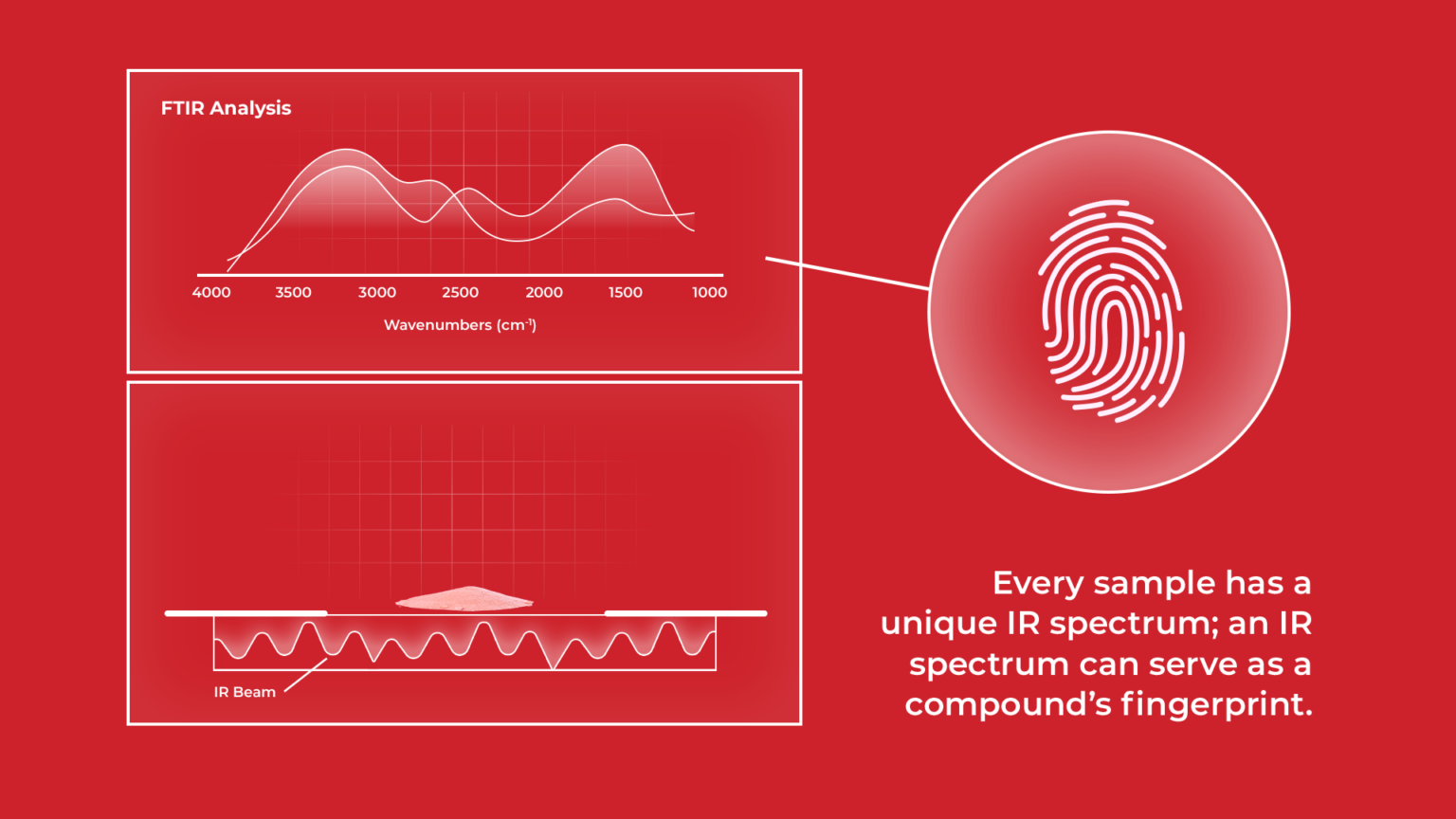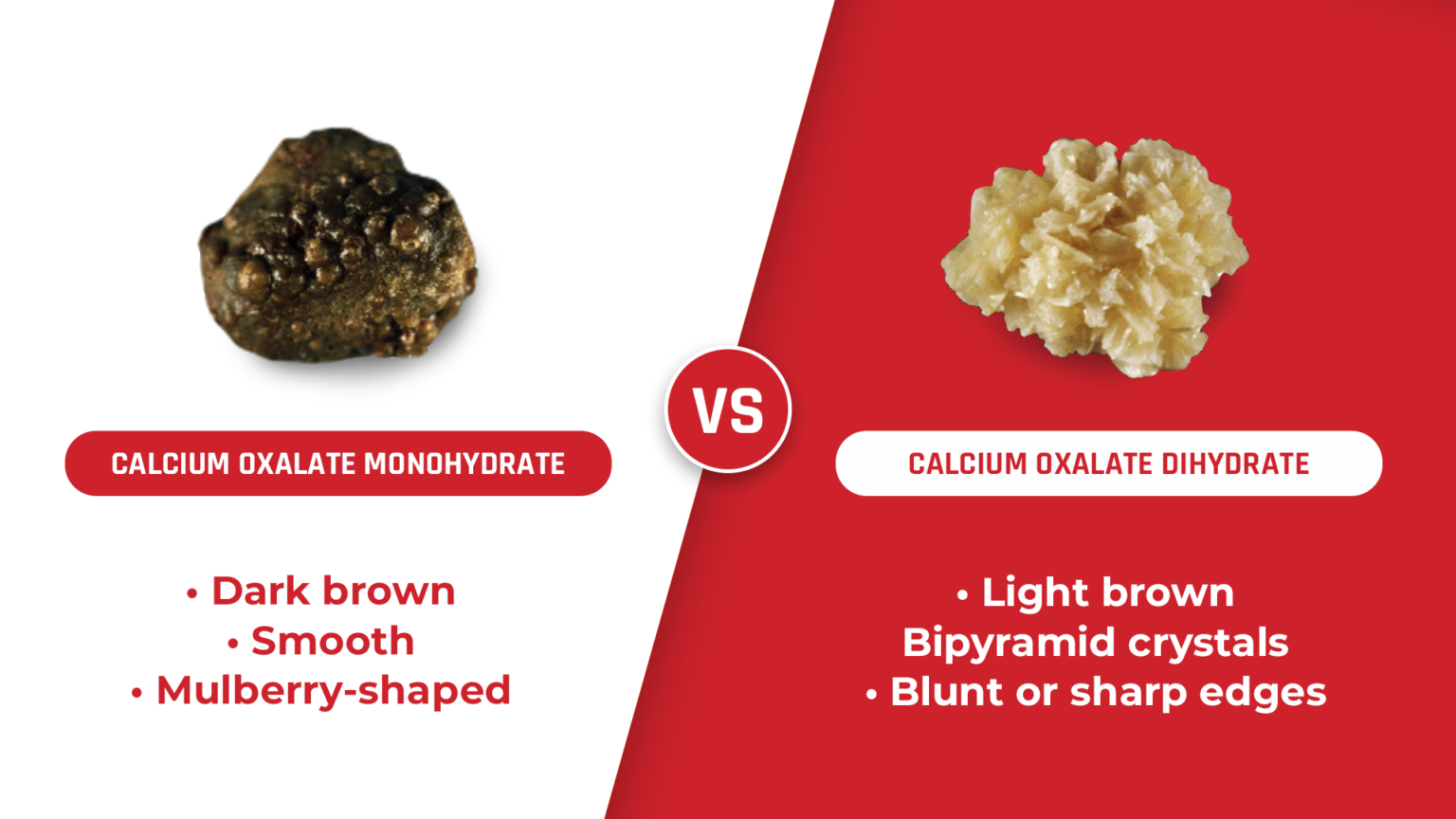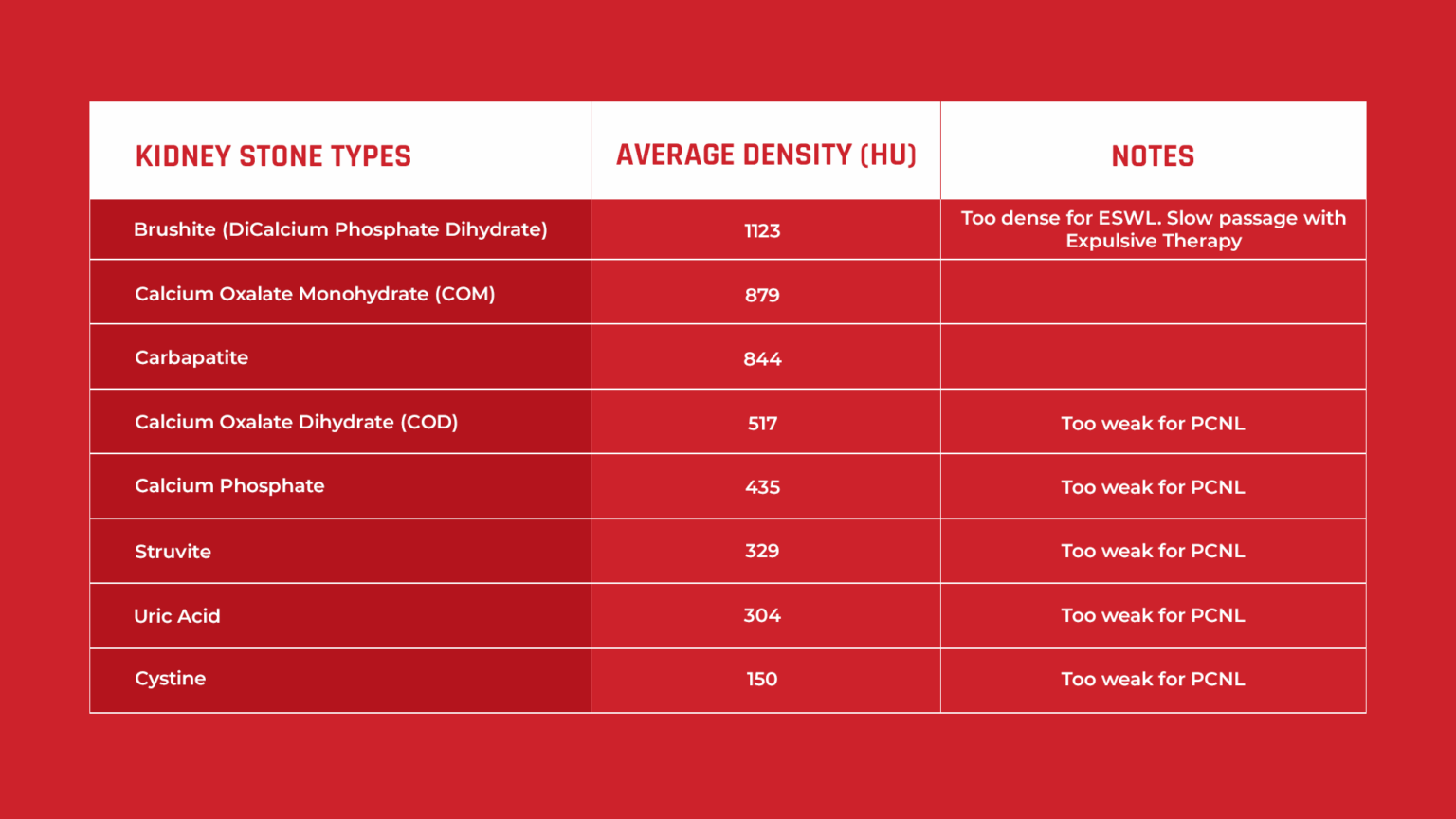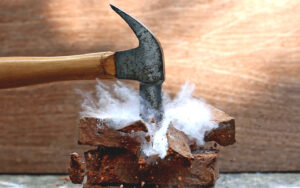Published: October 29, 2023 | 5 mins read
How to Identify Your Kidney Stones
Identifying your kidney stone type is the first step in selecting an appropriate treatment method. Stone type is also critical when contemplating any diet or lifestyle changes surrounding prevention because every stone type forms for unique reasons.
So, how do you go about identifying your kidney stone type? We’ll outline the three different methods in this article.
CHEMICAL ANALYSIS
The best method for determining your stone type is through chemical analysis. Meaning, your doctor would analyze the chemical contents of the stone you passed. Chemical analysis is the most accurate way to assess stone type. Once your doctor has your kidney stone, they will send it to a lab to start the process.
Most labs typically begin by performing a micro-CT scan of the stone to identify the different regions of the stone. Then, the stone is cleaned with water, dried for 24 hours, and crushed into a powder. The powdered kidney stone is then placed on top of a crystal.
An infrared beam is passed through the crystal, which interacts with the powdered kidney stone. During this interaction, the molecular bonds within the kidney stone absorb some radiation from the infrared beam. As a result, every kidney stone type has a unique infrared spectrum which serves as a fingerprint for specific stone types.
Lab workers will then take the infrared spectrum output from the powdered stone and compare it to infrared spectrums from known kidney stone types. From this, they can determine the specific composition of your kidney stone by percentage.
Please note that a urinalysis is NOT sufficient to determine the stone type. Many people get this confused. A urinalysis can detect certain stone-forming materials, like oxalate, but it will not identify your stone type.

VISUAL IDENTIFICATION
The next best option is to attempt a visual analysis of a stone you have previously passed. All kidney stone types have distinct appearances, also known as morphology, due to the specific chemical elements they contain. The form, texture, and color of stones will give us an idea of your kidney stone type.
For example, calcium oxalates are the most common type of kidney stones, accounting for more than 70% of total kidney stone cases. Different subtypes include calcium oxalate monohydrate (COM) and calcium oxalate dihydrate (COD). COM appears smooth, dark, and mulberry-shaped, while COD is lighter in color and has jagged edges.
If you want to know the differences between all kidney stone types, check out our site’s Kidney Stone Identification page here.
By visual comparison, stone types can be partially identified. However, kidney stones are complex and visual identification is not always enough. Certain stone types will look one way on the surface but contain other elements buried below that impact the formation.

CT SCAN – STONE DENSITY CORRELATION
Suppose this is your first kidney stone, or you were never able to capture any previously passed stones for chemical or visual analysis. In that case, a CT scan is your method of choice. First, however, you must ask your doctor about this! Unfortunately, most doctors will not automatically investigate stone density, even though the American Urological Association highly recommends it.
A CT scan will provide you and your doctor with stone density information, also known as attenuation. The density figure for kidney stones is represented in Hounsfield Units or HU. Hounsfield units are a radiodensity scale that measures the amount of x-rays that pass through or are absorbed by tissues. For example, fat is a negative HU number, water is assigned a value of 0 HU, and bone is 1000 HU.
While a stone density figure will not provide you with an exact percentage composition of your stone type, it will still identify the stone type. Just like how chemical analysis uses the infrared spectrum to “fingerprint” stone types, each stone type also falls within a density range that can be used for identification. See below for a density identification chart:
Understanding the density of your stone can lead to better treatment decisions, as not every procedure is appropriate for all stone types. For example, the popular Shockwave Lithotripsy (SWL) should not be used on kidney stones with density figures over 1000 HU as the success rate decreases dramatically.
If you worry about radiation exposure under a traditional CT scan, you can ask for a low-dose CT instead. Low dose means lowering radiation doses between 2.1 and 4.5 mSv from around 10 mSv in a traditional CT scan.

CONCLUSION
Whether this is your first kidney stone or your fiftieth, the best practice will always be to identify what type of kidney stone you form. Again, this is the first step in selecting an appropriate treatment method.
Additionally, you should only need to identify your kidney stone type once throughout your lifetime. After that, it rarely changes unless you’ve undergone significant dietary modifications or started taking a pharmaceutical drug known to cause stones.
If you want real-time guidance on the entire process of combating your kidney stone, from identification to treatment and eventually prevention, we advise joining our Coaching Program. This will give you an opportunity to clear all confusion, ask questions, have your diet and lifestyle analyzed, and finally formulate the best Prevention Plan.
REFERENCES
- Differentiation of calcium oxalate monohydrate and calcium oxalate dihydrate stones using quantitative morphological information from micro-computerized and clinical computerized tomography
- Usefulness of hounsfield unit and density in the assessment and treatment of urinary stones
- Diagnostic Accuracy of Low and Ultra-Low Dose CT for Identification of Urinary Tract Stones: A Systematic Review
- Analysis of stones formed in the human gall bladder and kidney using advanced spectroscopic techniques



A CT is worth it for first-time stone-formers who don’t know their stone type yet ????